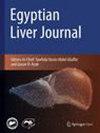A rare gastrointestinal bleeding due to a cholecystoduodenal fistula: a case report
IF 0.8
Q4 GASTROENTEROLOGY & HEPATOLOGY
引用次数: 0
Abstract
Abstract Background Gastrointestinal bleeding from cholecystoduodenal fistula is rare. It is usually managed surgically, although a conservative approach is reported in isolated cases. Case presentation A 71-year-old male patient was admitted to the emergency department (ED) presenting melena associated with severe anemia, requiring a blood transfusion. An urgent upper endoscopy showed the intestinal orifice of a cholecystoduodenal fistula. This finding was confirmed by radiological examination and laparoscopy. Cholecystectomy and simultaneous excision of the fistula were successfully performed. As a result, a diagnosis of Mirizzi syndrome type Va was also made. Conclusion A cholecystoduodenal fistula orifice leading to gastrointestinal bleeding is difficult to diagnose without an endoscopic examination of the upper digestive tract. Following this first diagnostic step, a comprehensive patient examination should be conducted, specifically if a history of gallbladder lithiasis has been reported.罕见的胆囊十二指肠瘘致消化道出血1例
摘要背景胆囊十二指肠瘘引起的消化道出血较为罕见。虽然在个别病例中也有保守治疗的报道,但通常采用手术治疗。一例71岁男性患者因重度贫血并发黑黑症被急诊科收治,需要输血。紧急上腔内窥镜检查显示胆囊十二指肠瘘的肠口。放射学检查和腹腔镜检查证实了这一发现。成功行胆囊切除术并同时切除瘘管。结果诊断为Va型Mirizzi综合征。结论胆囊十二指肠瘘口导致消化道出血,不经上消化道内镜检查难以诊断。在第一步诊断之后,应进行全面的患者检查,特别是有胆囊结石病史的患者。
本文章由计算机程序翻译,如有差异,请以英文原文为准。
求助全文
约1分钟内获得全文
求助全文

 求助内容:
求助内容: 应助结果提醒方式:
应助结果提醒方式:


